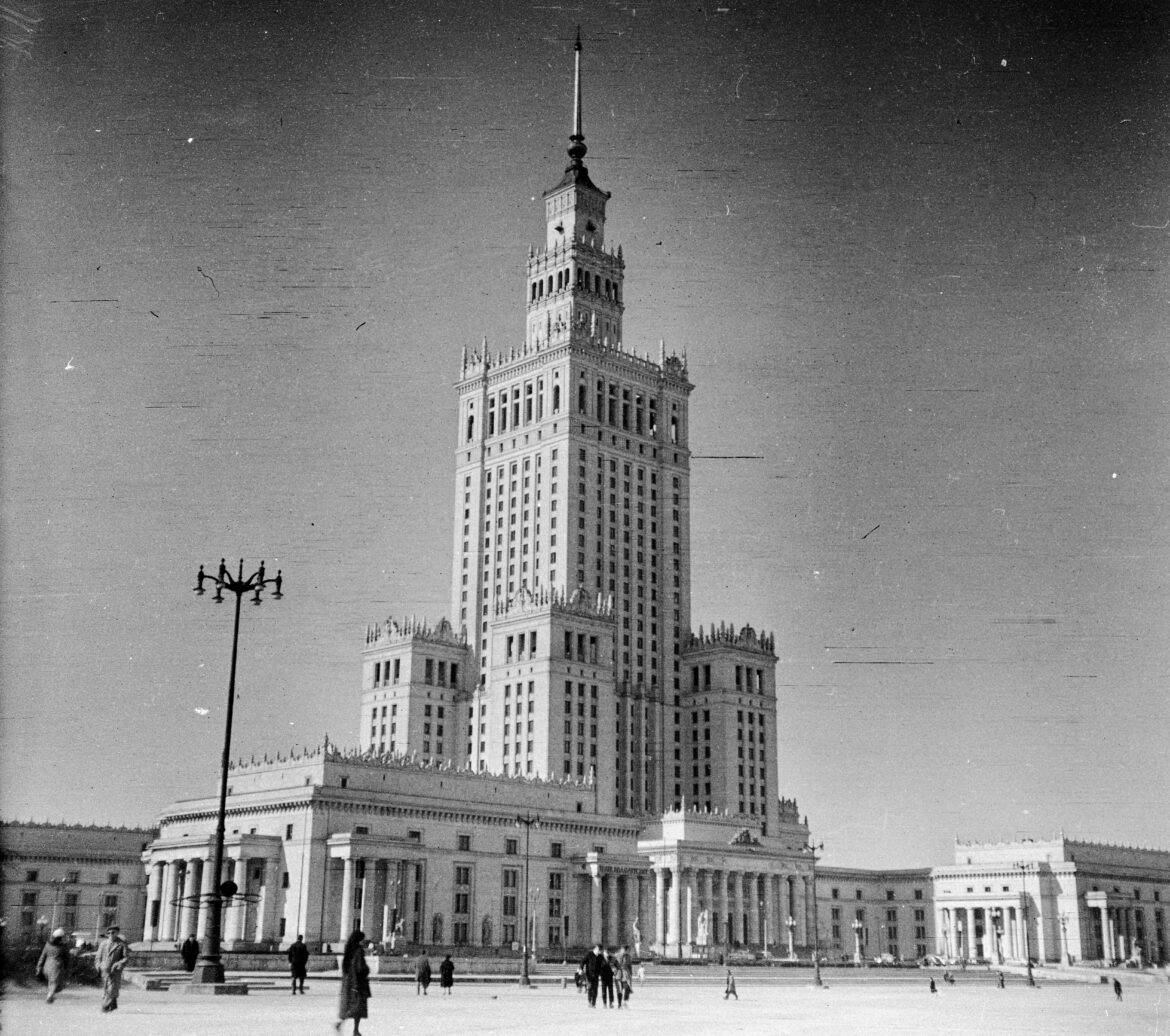The Palace was built between 1952 and 1955 and was called the “high-rise edifice”, but inhabitants of Warsaw still derisively refer to it as Pekin. The name comes from the abbreviation PKiN – meaning Palace of Culture and Science. Its construction was the initiative of Joseph Stalin. It is the second tallest building in Poland.
The edifice, as a “gift of the Soviet nation to the Polish nation”, was erected by Soviet Union builders according to a socialist realist design by Lev Rudnev. In fact, in terms of style, it also represents the architectural trend that is called historicism. Rudnev was inspired by the skyscrapers of Moscow. Basically, they were modelled on American skyscrapers in the art déco style.
Before work began on the Warsaw palace, a Polish-Soviet agreement on its construction was signed in Warsaw on 5 April 1952. In this agreement, the Soviet government undertook to build, at its own expense, a 28-30-storey skyscraper to serve, among other things, as the seat of the newly established Polish Academy of Sciences.
In fact, the essential arrangements had been made earlier, i.e. in the autumn of 1951, in an intergovernmental protocol signed by the two countries. In addition, by virtue of a resolution of the Presidium of the Council of Ministers of 28 January 1952, the Polish side undertook to finance the investment works. The next step was the approval by the Presidium of the sketch architectural design of the building. It was assessed very positively for its “extremely apt and beautiful design”.
Construction work began in 1952, with 16 people died during the process. They were Russians who were buried in the Orthodox cemetery in the Wola district. A total of 3,000 to 5,000 workers from the USSR and 4,000 Polish workers were involved in the works.
Two days after Stalin’s death, on 7 March 1953 – the Council of State and the Council of Ministers of the Polish People’s Republic passed a resolution to honour the leader of the Soviet Union by naming the Palace after Stalin. There were also plans to erect a monument to the leader in Stalin Square (later Parade Square), which stretched in front of the Palace. In the end, the monument was not erected because none of the designs pleased the party decision-makers, even though prominent artists such as Xawery Dunikowski had participated in the competition.
For most Varsovians, the Palace became a symbol of Soviet domination in Poland. It was generally referred to as the ‘Peking’, the ‘Pajac (clown) of Culture’ and the ‘dream of the mad confectioner’. The latter term was coined because of the building’s resemblance to a giant cake.





